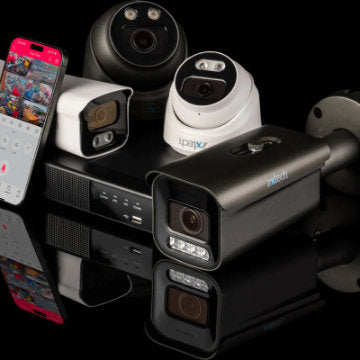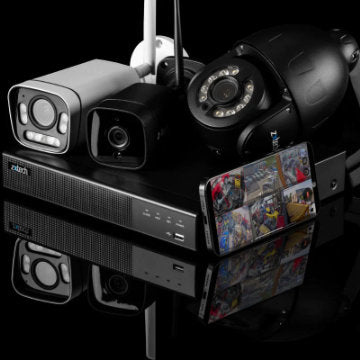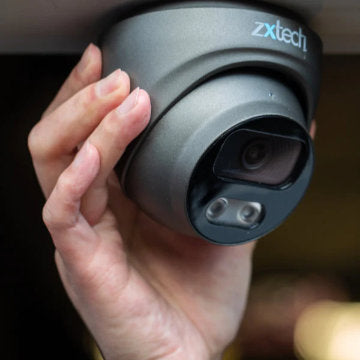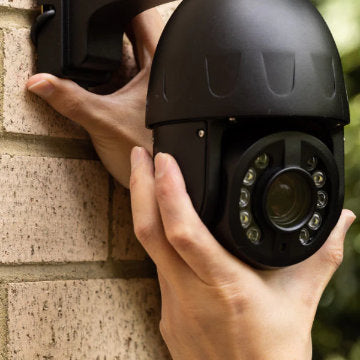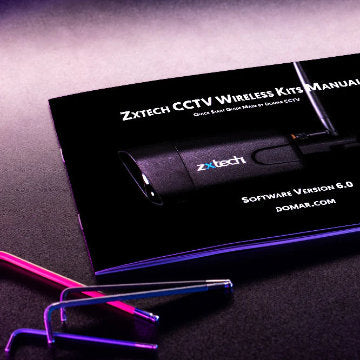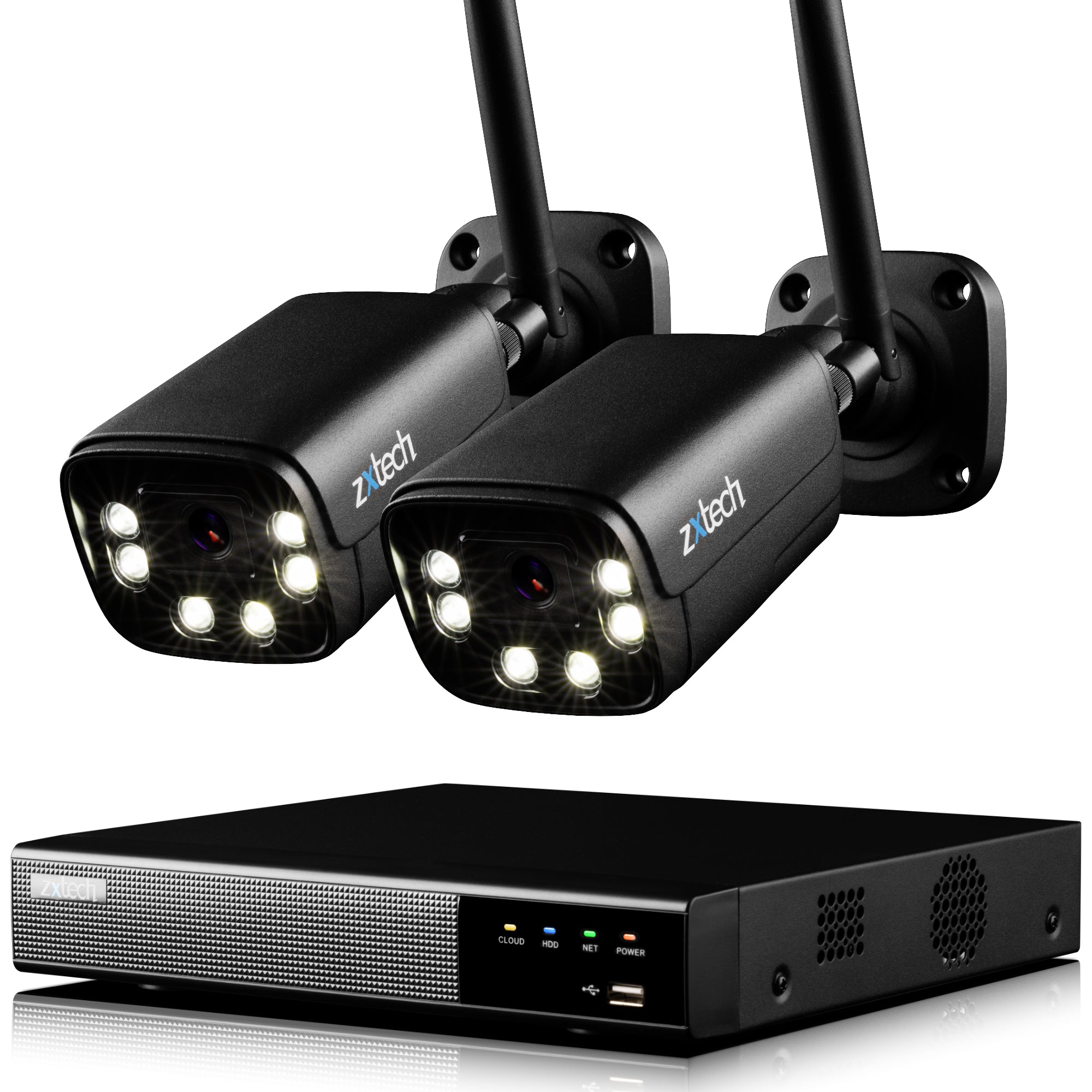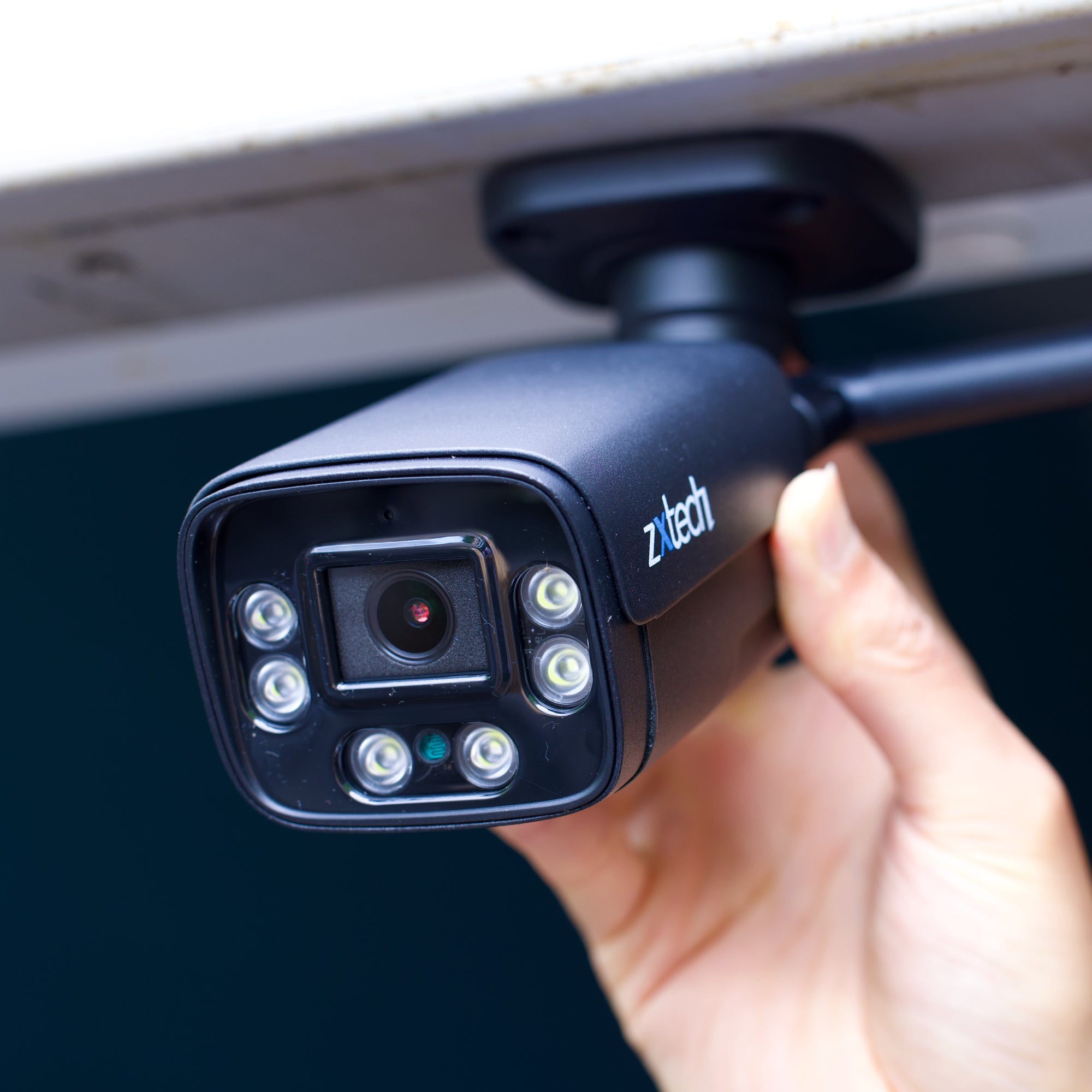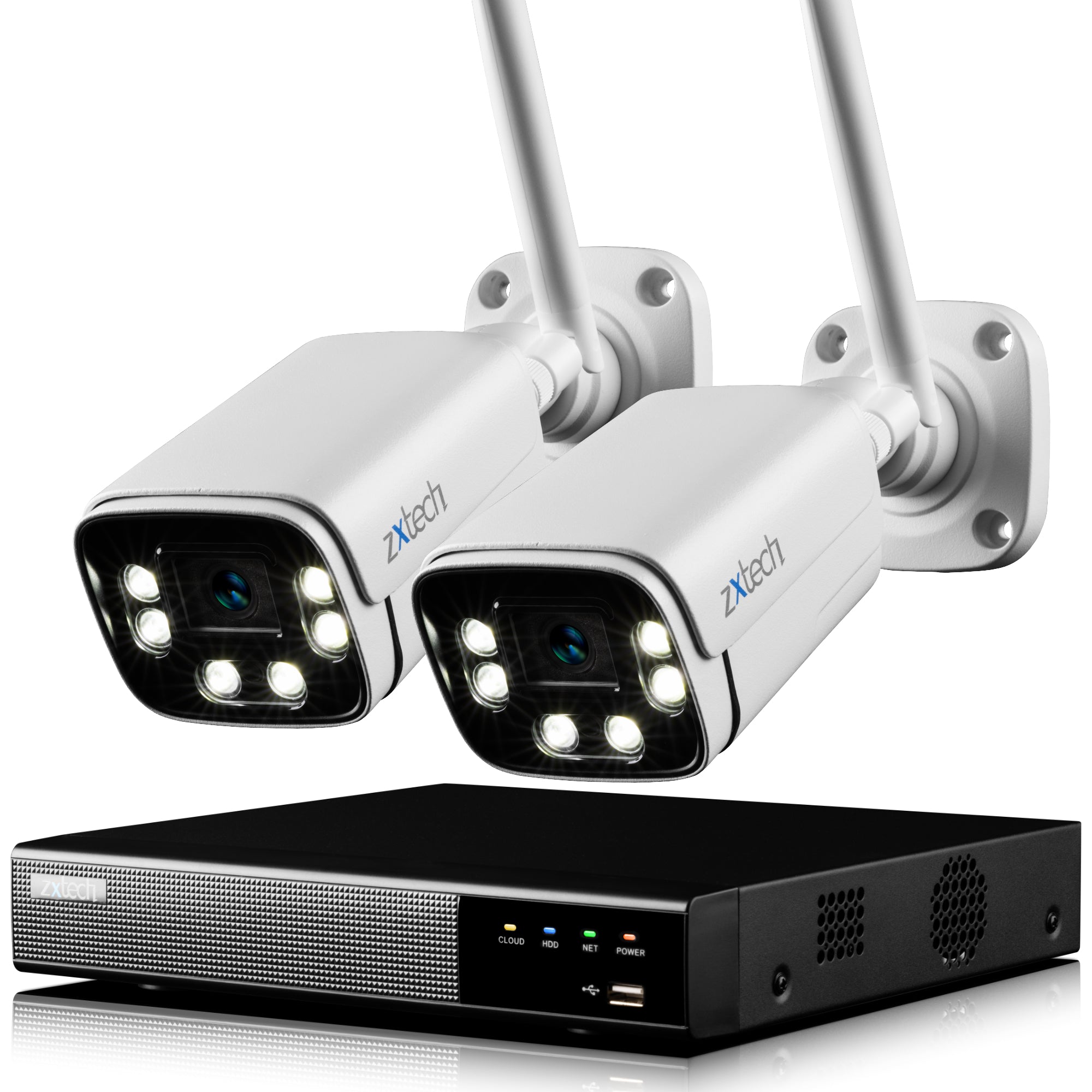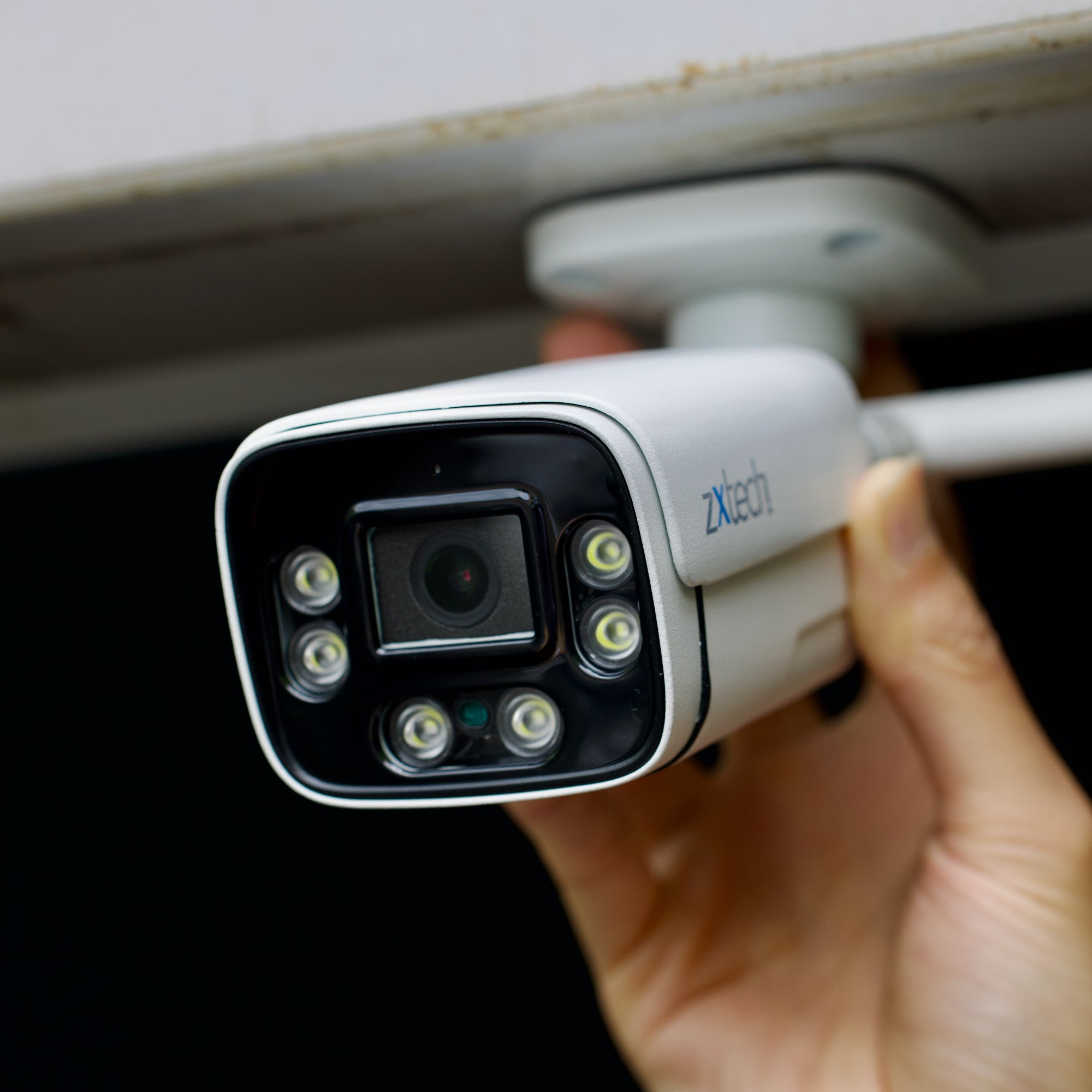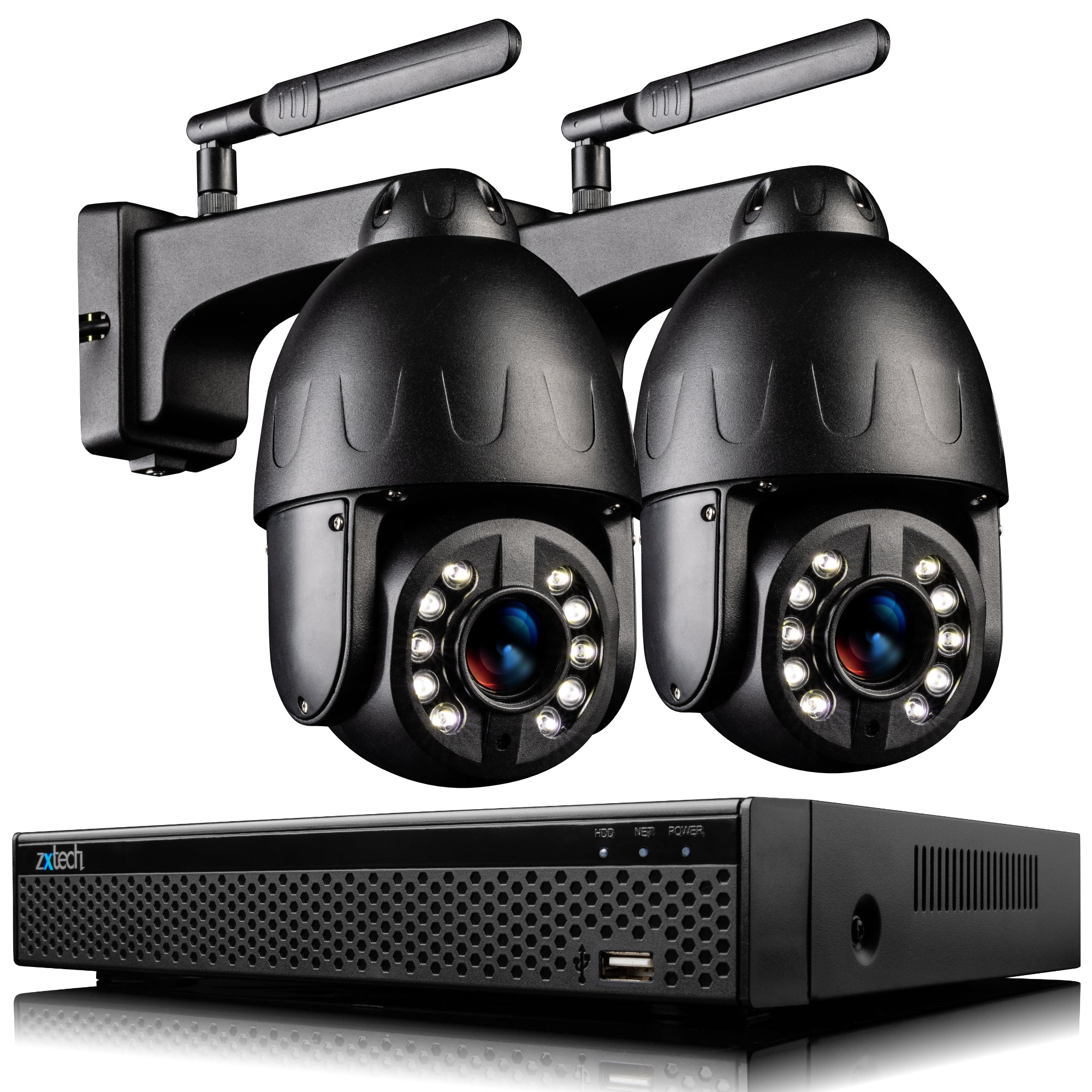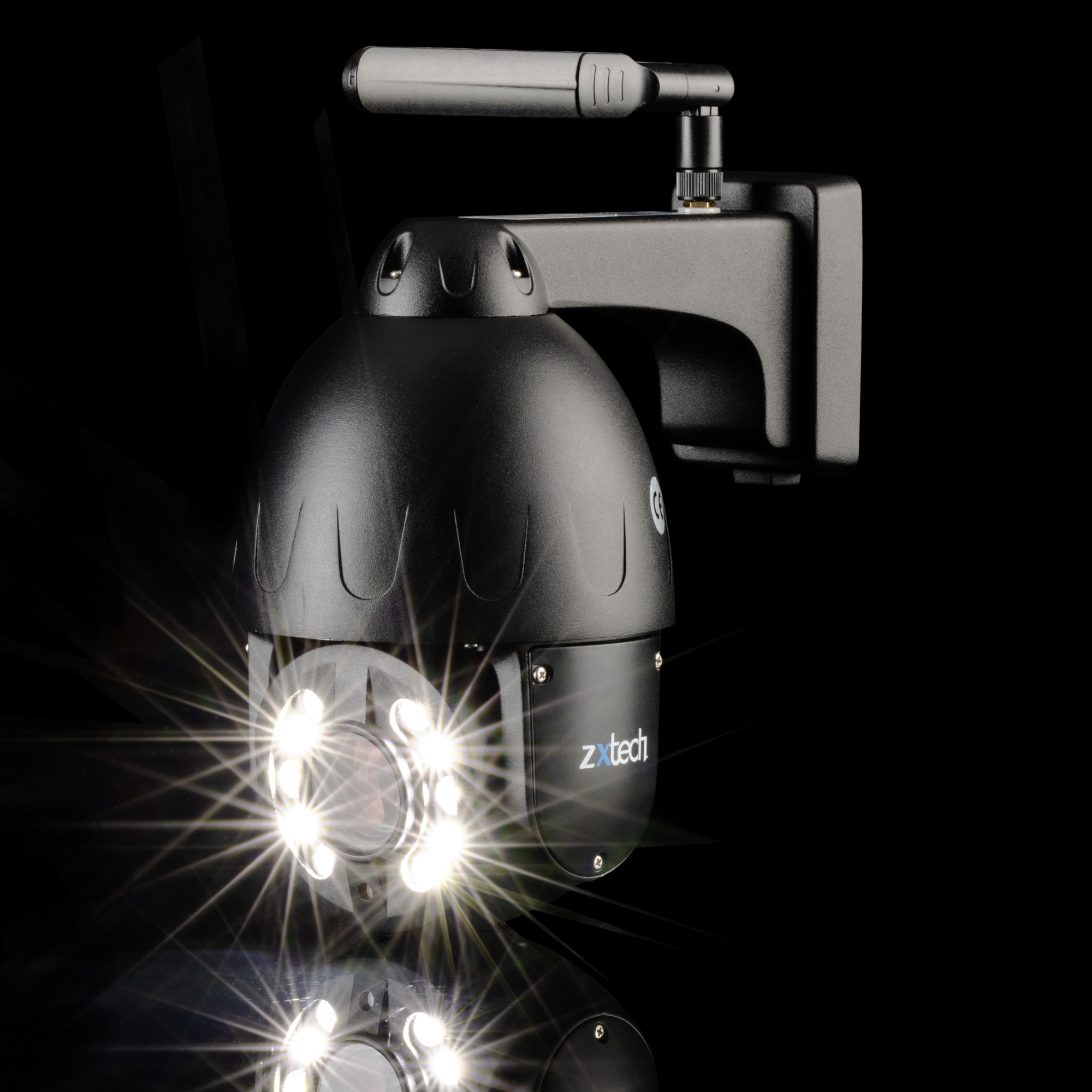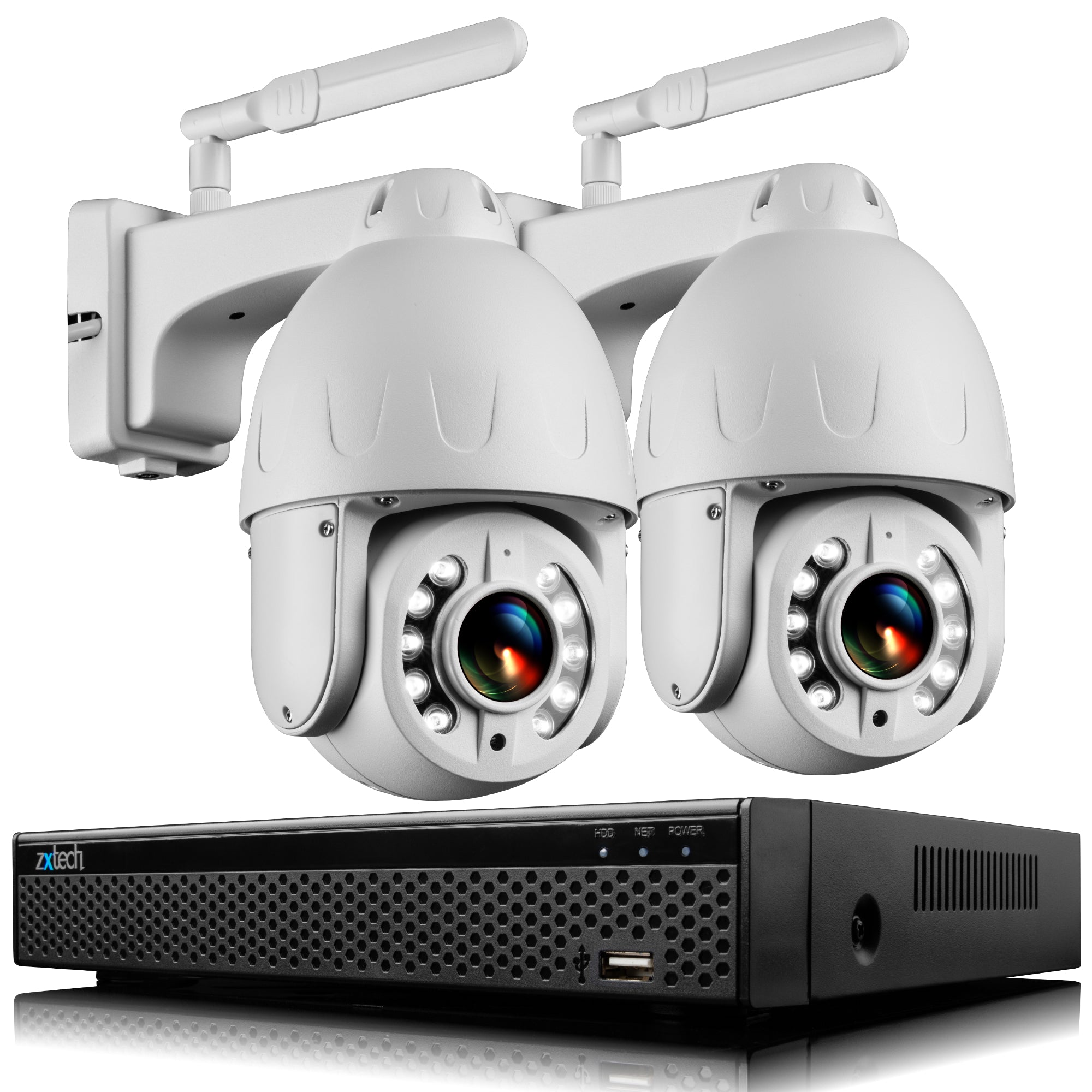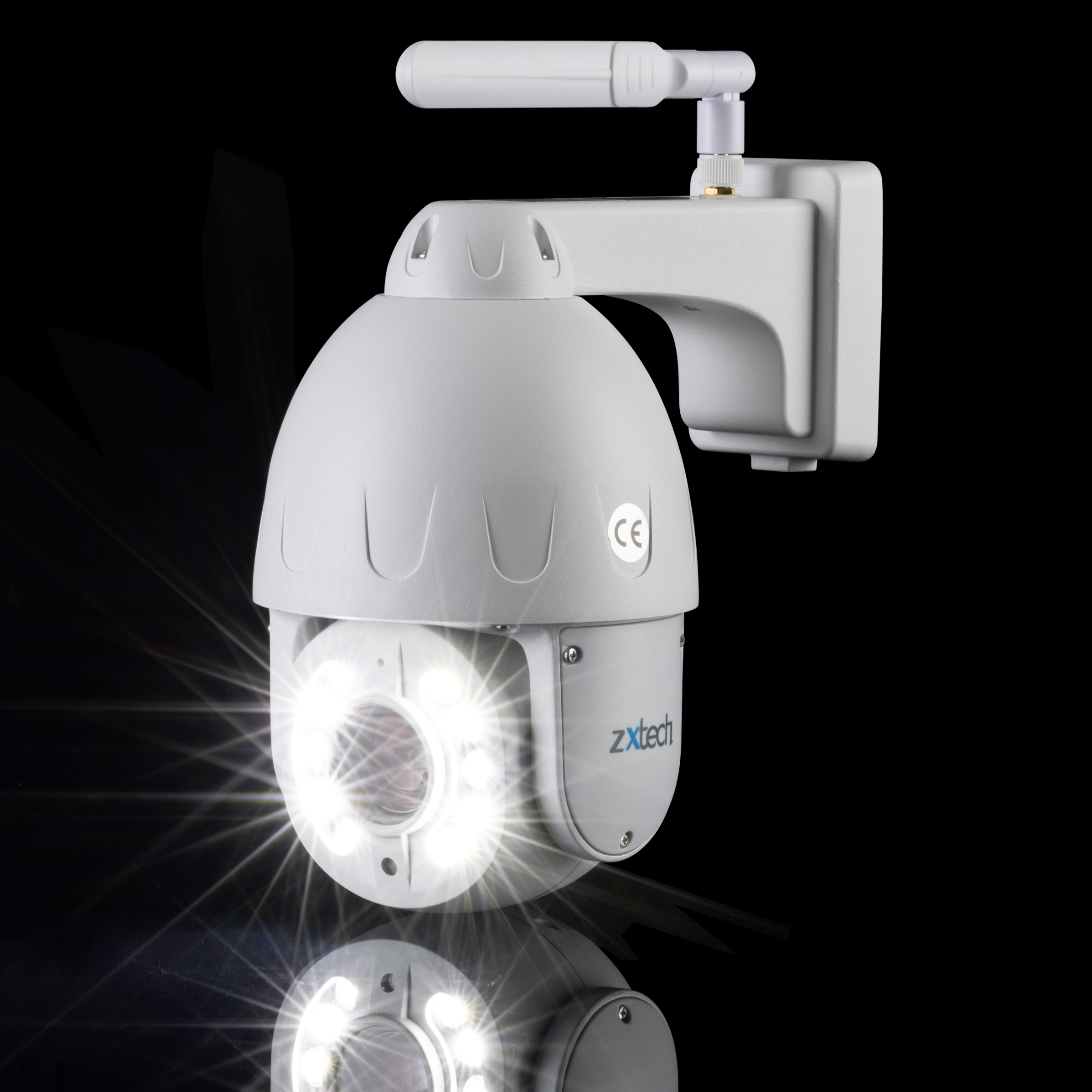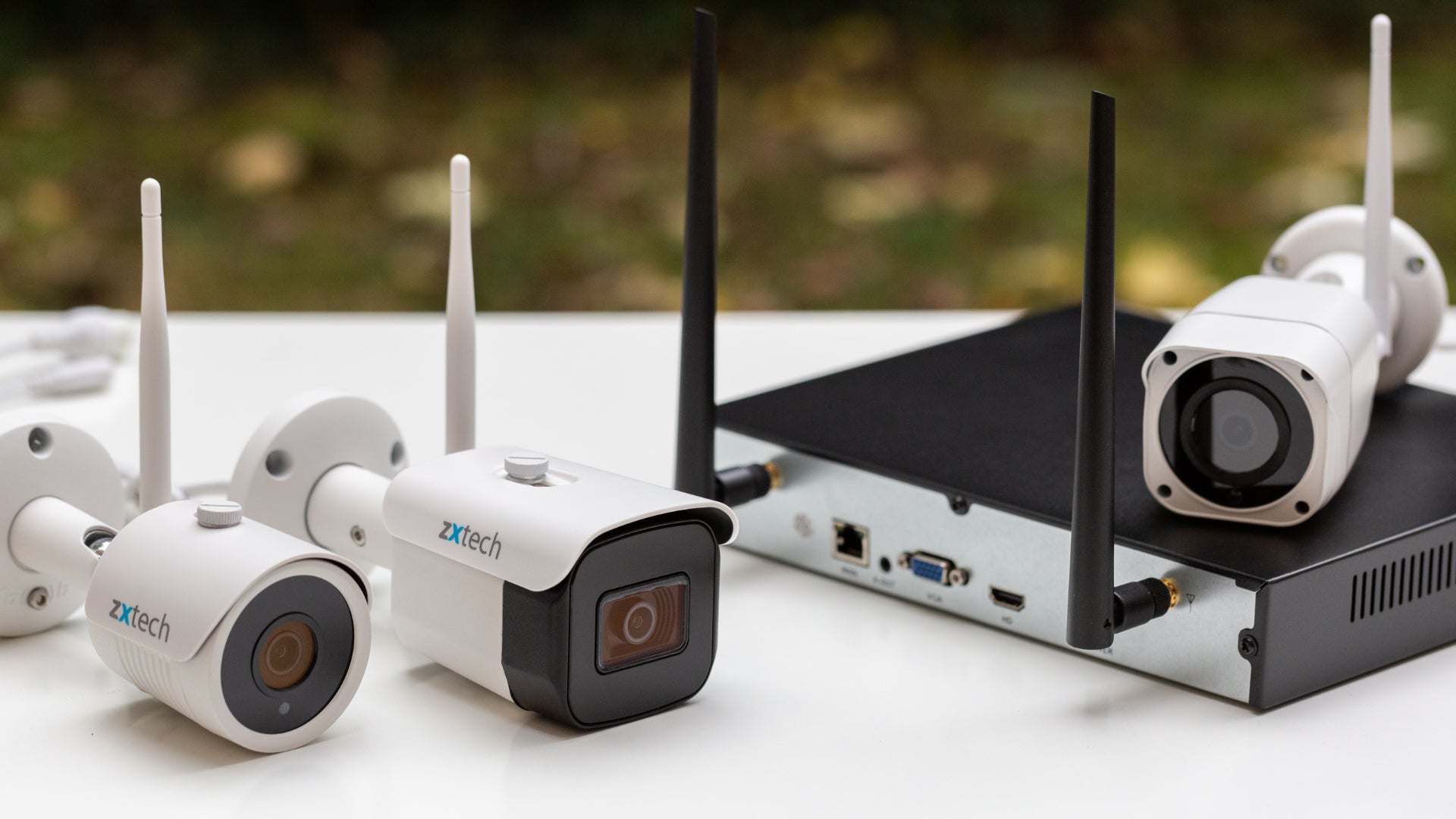
Filters
4 products
Wireless CCTV System
What is Wireless CCTV System
Wireless CCTV systems are a popular security option for homes and businesses. Unlike traditional CCTV systems, which use cables to transmit video footage from the cameras to a central location, wireless CCTV systems use Wifi signals to transmit the footage wirelessly. This makes them easier and more flexible to install, as they do not require the installation of cables.
Wireless CCTV systems consist of a number of components, including cameras, a wireless transmitter (most likely your wireless router), and a receiver (most likely the record comes with the system). The cameras are placed at strategic locations around the premises and are connected to the router, using a wireless receiver/Antenna. The transmitter then sends the video footage from the cameras to the NVR, which is connected to a monitor or a network video recorder (NVR) for storage and viewing.
One advantage of wireless CCTV systems is that they are easy to install. The cameras can be placed wherever they are needed, without the need to run cables. This makes them ideal for locations where it is difficult or impractical to install cables, such as in historic buildings or in remote locations.
Another advantage of wireless CCTV systems is that they are flexible and can be easily expanded or modified. Additional cameras can be easily added to the system, and the transmitter can be connected to multiple receivers to provide coverage in multiple locations. This allows for scalable and flexible security coverage.
Wireless CCTV systems also have a number of other features that make them an effective security solution. Many wireless CCTV cameras have advanced features such as night vision, motion detection, human and face detection, and the ability to pan, tilt, and zoom. They can also be accessed remotely, using a smartphone or computer, allowing users to view the footage from anywhere with an internet connection.
In conclusion, wireless CCTV systems are a convenient and effective security option for homes and businesses. The ability to transmit video footage wirelessly makes them easy to install and flexible, and their advanced features and remote access capabilities make them a versatile and effective security solution.
Top 10 Benefits of Wireless CCTV System
- Easy installation: Wireless CCTV systems do not require the installation of cables, making them easy to install and relocate. This is particularly useful in locations where it is difficult or impractical to run cables, such as in historic buildings or in remote locations.
- Flexible and scalable: Wireless CCTV systems can be easily expanded or modified, allowing for flexible and scalable security coverage. Additional cameras can be easily added to the system, and the transmitter can be connected to multiple receivers to provide coverage in multiple locations.
- Advanced features: Many wireless CCTV cameras have advanced features such as night vision, motion detection, and the ability to pan, tilt, and zoom. This makes them more versatile and effective in a variety of security situations.
- Remote access: Wireless CCTV systems can be accessed remotely using a smartphone or computer, allowing users to view the footage from anywhere with an internet connection. This can be useful for monitoring the premises when the user is not on site.
- Data storage: Wireless CCTV systems can store footage on a network video recorder (NVR) or in the cloud. This allows for easy access to the footage and more flexible storage options.
- Integration with other systems: Wireless CCTV systems can be easily integrated with other security systems, such as alarms and motion detectors. This allows for more comprehensive security coverage and easier monitoring and control.
- Network connectivity: Wireless CCTV systems are connected to a network, allowing for easy communication and control of the cameras. This can be useful for remote access and integration with other systems.
- Cost-effectiveness: In many cases, wireless CCTV systems are more cost-effective than traditional wired systems. The lack of cables reduces the cost of installation, and the flexibility and advanced features of the cameras can provide greater value in the long term.
- Discreet: Wireless CCTV cameras are often smaller and more discreet than traditional wired cameras. This makes them less obtrusive and can help prevent potential criminals from noticing and avoiding them.
- Versatility: Wireless CCTV systems can be used in a variety of settings, including homes, businesses, and public areas. Their flexibility and advanced features make them suitable for a wide range of security and surveillance applications.
Top 10 Use Case of Wireless CCTV System
- Providing surveillance in remote or hard-to-wire locations
- Temporary surveillance for events or construction sites
- Monitoring large outdoor areas, such as parking lots or parks
- Enhancing security in businesses, schools, and other public buildings
- Monitoring traffic flow and helping with traffic management
- Enhancing home security and enabling remote monitoring
- Providing security for transportation systems, such as buses or trains
- Enabling surveillance in hazardous environments where wired cameras may not be safe
- Facilitating communication and coordination among security teams
- Allowing for quick and easy deployment of a surveillance system without the need for complex wiring
However it is important to note that one major drawback of wireless CCTV systems is that they can be vulnerable to signal interference or loss of connection due to obstacles. This can make the images or footage from the cameras less reliable and may make it difficult to use the footage as evidence in the event of a crime. Therefore it is important to consider both pros and cons before buying.
Next Business Day Delivery
Place orders before 3pm for next business day delivery. Free shipping for all kits.
Customer service
Reach out Mon-Fri, 9am-5pm. Response within 24 working hours.
Refer a friend
Earn rewards when your friends make a purchase.
VAT Invoices
We always include your VAT invoices in your delivery.
Discover everyday privacy protections.
Privacy is Our Priority.
Privacy is a fundamental human right. At Domar CCTV, it is also one of our core values. Your devices are important to your safety. We sell our products to protect your privacy and give you control over your information. It's not always easy, but those are the principles we believe in.

Face Detection Data
Our cameras come with smart face detection features. Face detection data exist only on your device and can be deleted at any time. It does not go anywhere else. Face detection features can be turned off at any time.

Video Footage
Your security footage is protected by your password and cannot be accessed without it. Once you have changed the default password of the device, only manufacturer can reset it, after confirmation of purchase and identity.

Audio Data
Audio recording can be turned on and off if the camera is equipped with a microphone. It cannot be accessed without your password.

App Access
One device can link up with a single mobile app account. However, you may share it with another account and cease sharing at any time.

